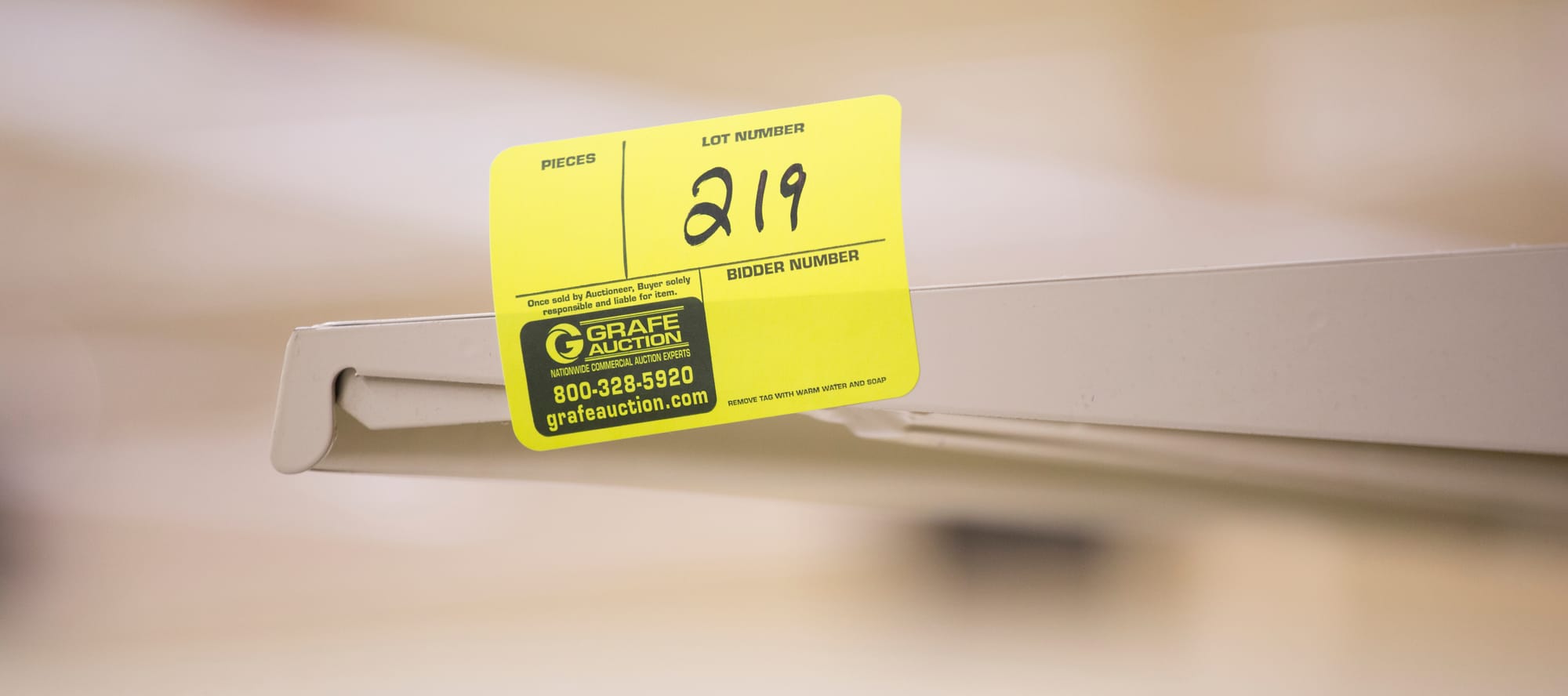Simplify Business Liquidation: Your 8-Step Guide to a Stress-Free Process

If you've made the difficult decision to close your business, one of the next challenges you face is figuring out how to liquidate your business assets and equipment. While there are several options available, business liquidation auctions offer a number of compelling benefits.
Why Choose a Business Liquidation Auction?
Business liquidation auctions, when run by an experienced and reputable auction company, are designed to maximize the value of your business assets while minimizing hassle and stress for you. Key benefits include:
- Reaching a wide audience of potential buyers to drive up prices through competitive bidding.
- Ensuring a timely sale, which is often critical when you need to vacate premises by a set date.
- Providing a transparent process where all bids are made publicly.
- Taking the logistical burden off your plate so you can focus on other aspects of closing your business.
Understanding how to navigate this process efficiently and effectively is crucial to maximizing your returns and minimizing stress. This blog aims to guide you through the essential steps to prepare for a successful business liquidation auction.
Step 1: Asset Inventory
Before you can proceed with selling off your assets, it's vital to know exactly what you have. Conduct a comprehensive inventory of all business assets. This includes furniture, equipment, inventory, and any intangible assets. Categorizing these assets not only helps in organization but also aids in determining the best sales approach for different item types. Specialized business equipment, food service equipment, commercial kitchen equipment, and office furniture are just a few examples of items that may be included.
Step 2: Legal and Financial Clearance
Ensure all legal and financial aspects are in order before moving forward. Key steps include:
- Clearing any liens or encumbrances attached to your assets.
- Communicating with creditors if you owe money on your business equipment:
- Discuss your intent to sell.
- Understand that the creditor will be entitled to the proceeds of the equipment up to the amount you owe.
- If the equipment is worth less than what you owe, the creditor may still allow you to sell the items with all proceeds going to them. This is especially common for SBA loans guaranteed by the federal government.
- Be aware that SBA loans may require additional steps before the equipment can be sold.
Consult with a financial advisor or legal counsel to verify that all financial obligations are settled, ensuring a smooth auction process.
Step 3: Choosing the Right Auction Company
Selecting an experienced auction company is crucial to the success of your liquidation. Look for a company that specializes in business liquidations and has a robust online bidding platform. An auction company with a strong marketing reach can significantly increase the visibility of your auction, attracting more potential buyers.
Grafe Auction, for instance, offers a streamlined process with a proven track record since 1959, ensuring you get the best possible outcomes. When you work with an auction company to liquidate your business assets, one of the first steps is to share your specific goals and needs. This allows us to develop a customized auction plan tailored to your unique situation. At Grafe Auction, we take into account factors like your timeline, the types of assets you need to sell, and your financial goals to create a plan that meets your needs. By taking the time upfront to clearly communicate your objectives, you set the stage for a successful auction that achieves the outcomes you're looking for. Once Grafe Auction understands the scope of your business liquidation, we work with you to create a contract outlining auction terms before moving forward.
Step 4: Setting Terms of Sale
Clearly define the terms of sale, including payment methods, pick-up conditions, and any special terms related to specific assets. Clear terms help prevent misunderstandings and disputes with buyers, ensuring a smoother post-auction process. Grafe Auction helps you establish these terms to ensure transparency and efficiency.
Step 5: Preparing the Site and Cataloging Items
Whether the auction is online or in-person, preparing the site is key to presenting the items effectively. Organizing the layout to make items easy to catalog in a logical order can help the bidding process run smoothly. For online auctions, ensure that the website is user-friendly and that all listings are easy to navigate. Grafe Auction's experience in both online and live auctions ensures a professional setup that appeals to all types of bidders.

Proper cataloging involves listing each item or lot with a detailed description and high-quality photographs. This step is crucial as it provides potential buyers with the necessary information to make informed bidding decisions. Accuracy in descriptions and the quality of visuals can directly impact the interest level and perceived value of the items. Grafe Auction's team ensures that each item is meticulously cataloged, enhancing the appeal to bidders.
Step 6: Marketing Your Auction
Effective marketing is essential to attract the right buyers and achieve the best possible outcomes. Work with your auction company to develop a marketing strategy that may include online ads, email campaigns, social media, and more. The goal is to ensure that potential buyers are well-informed and interested by the time the auction starts. Grafe Auction utilizes targeted marketing campaigns to reach a wider audience, increasing the chances of a successful sale.

Step 7: Conducting the Auction
On auction day, technical support should be on hand to address any issues that might arise with the bidding platform. Grafe Auction's team is trained to handle all aspects of the auction day seamlessly and is always standing by to help bidders with questions as the auction closes. As the seller, you get to sit back and relax while our online platform does the work for you. We know it can be nerve-racking, but our experts work with hundreds of auctions each year and are prepared should any issues arise.
Step 8: Post-Auction Processes
After the auction concludes, the focus shifts to finalizing transactions. This includes processing payments, arranging for the pick-up or delivery of sold items, and handling any post-auction inquiries. Excellent customer service during this phase is crucial to ensure buyer satisfaction and compliance with the sales terms. Grafe Auction manages all post-auction logistics, ensuring a hassle-free experience for sellers and buyers alike.

Final Thoughts on Business Liquidation
Preparing for a business liquidation involves careful planning and attention to detail. By following these steps, you can ensure that your business assets are sold efficiently and profitably. Remember, each step is crucial in contributing to the overall success of the auction. With a trusted partner like Grafe Auction, you can navigate the complexities of business liquidation with confidence.
Ready to start your business liquidation process or need more guidance? Contact Grafe Auction today to learn how we can assist you in making your auction a success.

